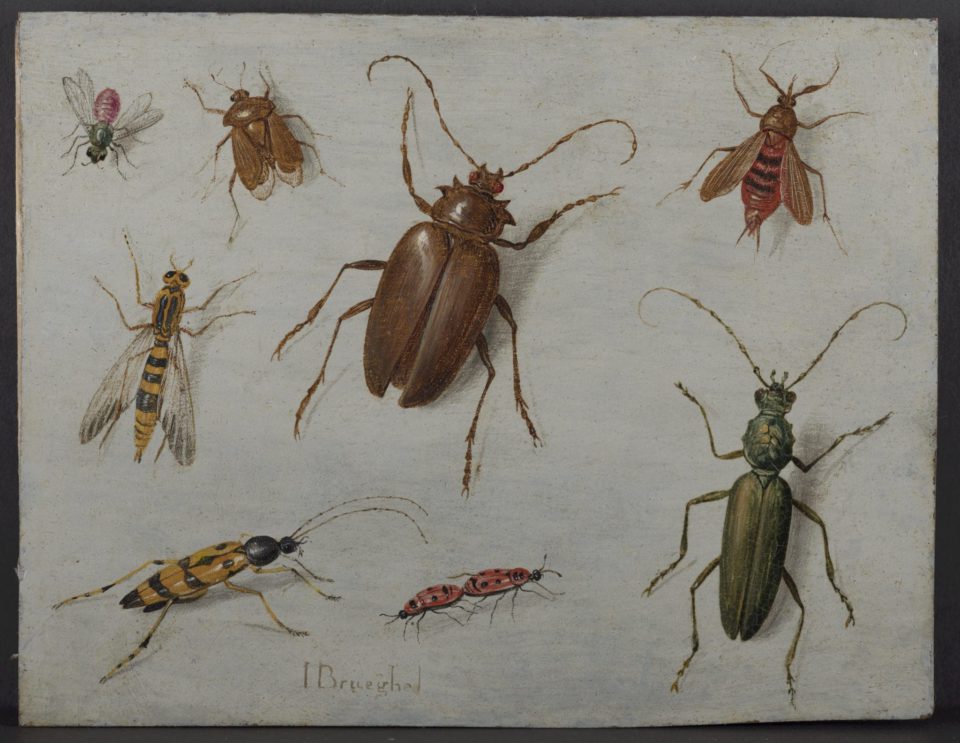Jan van Kessel the Elder (1626 – 1679)
Master of Miniature Still Lifes and Natural Wonders
Jan van Kessel the Elder was a Flemish painter known for his exquisite and detailed still lifes, flower paintings, and meticulous studies of insects, birds, shells, and other elements of the natural world. Born in Antwerp in 1626, he was a member of the illustrious van Kessel–Brueghel artistic dynasty, which included some of the most influential painters of the Flemish Baroque period.
Van Kessel was the grandson of Jan Brueghel the Elder, one of the key figures in early 17th-century painting, and through this lineage he inherited a deep appreciation for naturalistic detail, refined composition, and a keen interest in the intersection between art and science. He was trained in Antwerp and became a master in the Guild of Saint Luke in 1644, establishing himself as an independent artist at a relatively young age.
Much of Jan van Kessel’s work reflects the 17th-century fascination with the natural sciences and the growing popularity of cabinets of curiosities collections of exotic plants, animals, minerals, and man-made artifacts meant to showcase the wonders of the world. His paintings often resembled miniature encyclopedias, displaying a wide array of specimens, each rendered with scientific accuracy and aesthetic elegance. His subjects ranged from vibrant bouquets of flowers and carefully arranged fruit compositions, to insect studies, exotic birds, and allegorical representations of the Four Elements or the Four Continents.
Van Kessel often painted on copper panels, which allowed for exceptional detail and luminous color. His works were prized by collectors not only for their beauty but also for their educational and decorative value. Many of his paintings include inscriptions in Latin or Dutch, identifying the species or suggesting symbolic meanings, reflecting the period’s blending of art, knowledge, and devotion.
In addition to his natural studies, he created allegorical and devotional works, including series that depict biblical scenes, personifications of virtues, and mythological subjects, often framed within rich ornamental designs. His versatility as a painter is evident in the variety of genres he mastered, though his fame largely rests on his unmatched skill in rendering nature on a small scale.
Jan van Kessel the Elder died in Antwerp in 1679, leaving behind a substantial body of work that influenced later artists in both the Southern Netherlands and beyond. His paintings are preserved in major collections, including the Museo del Prado (Madrid), the Rijksmuseum (Amsterdam), the Louvre (Paris), and the Mauritshuis (The Hague).
Artistic Style and Subjects
Van Kessel specialized in:
- Miniature still lifes of flowers, fruits, and insects
- Cabinets of curiosities, depicting collections of natural specimens
- Detailed studies of birds, animals, and shells
- Allegorical and symbolic themes, often rich in color and texture
His paintings are celebrated for their precision, vibrant colors, and intricate compositions, which combine scientific observation with artistic beauty.
Legacy
Jan van Kessel’s work was highly sought after in his lifetime, especially by collectors interested in natural history and decorative art. His paintings are now held in major museums worldwide.
Today, Jan van Kessel is recognized as one of the most accomplished artists of his time, whose work captures the 17th-century spirit of curiosity, reverence for nature, and the desire to understand and celebrate the diversity of the created world.
Share this:


